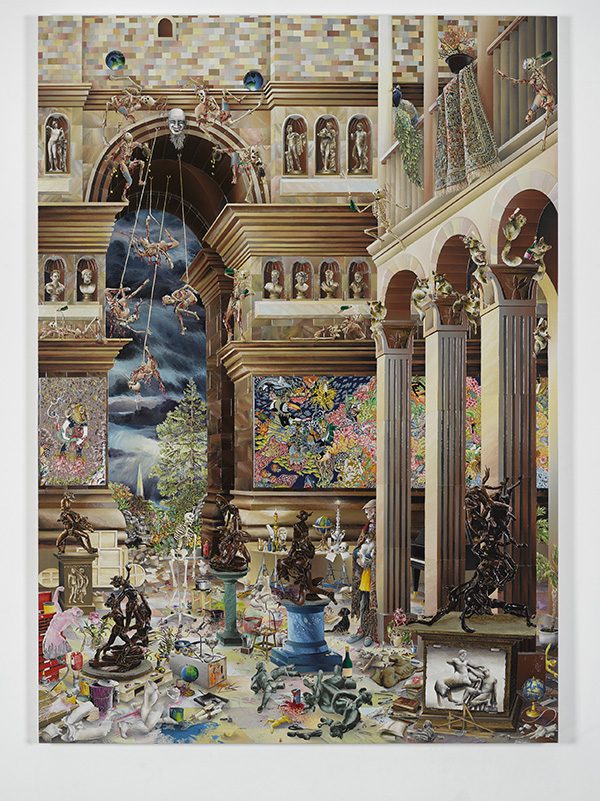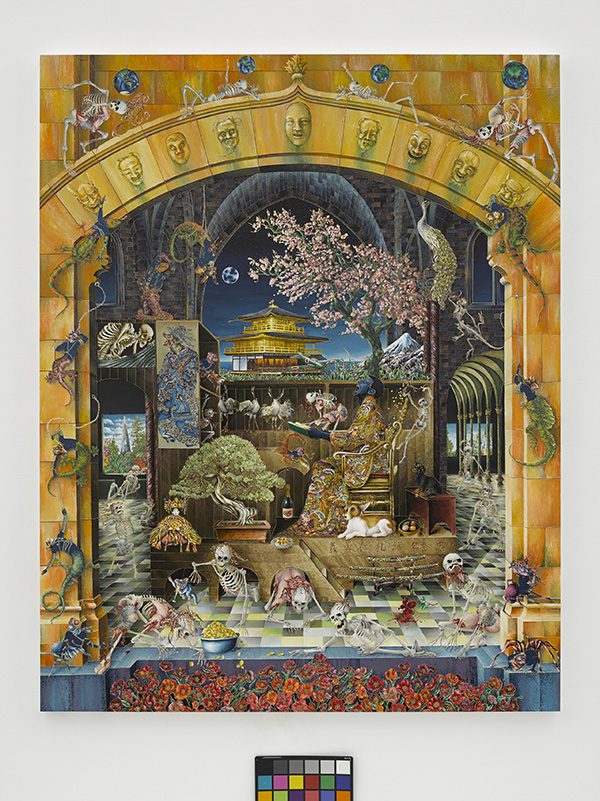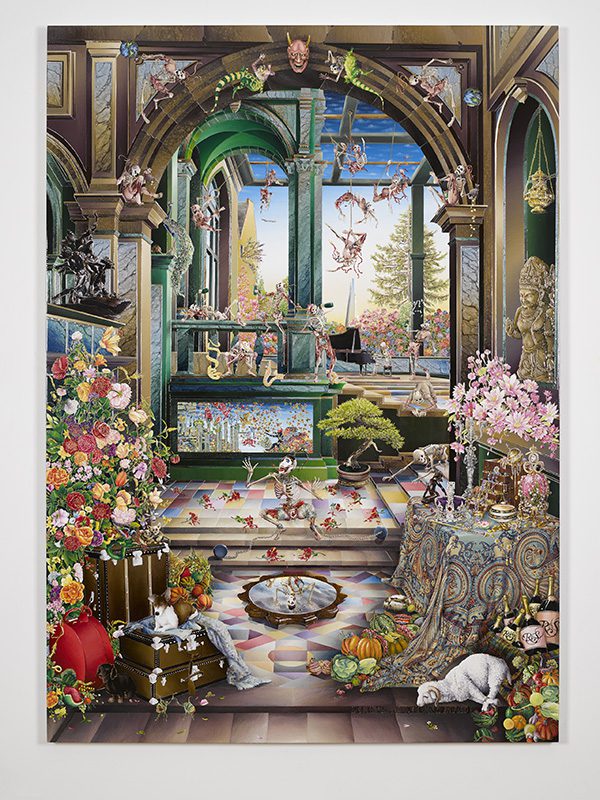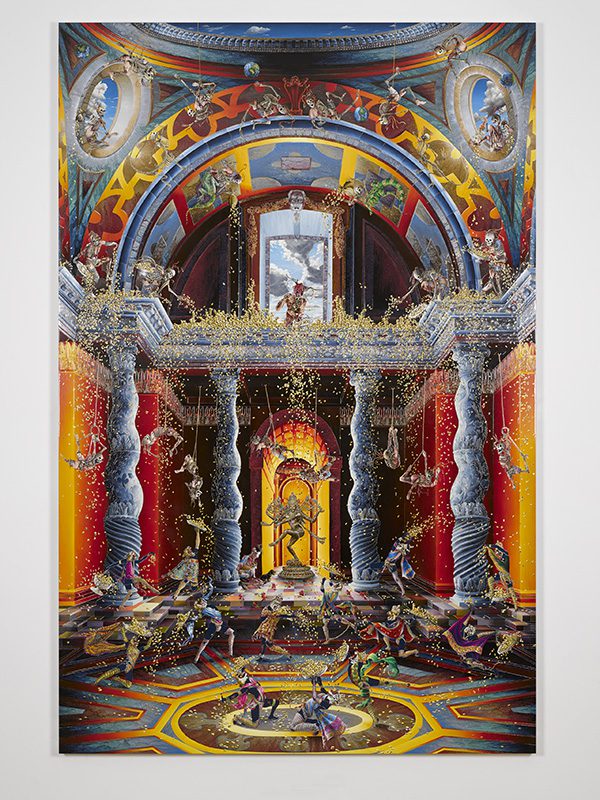ART-PRESENTATION- Raqib Shaw-Self Portraits
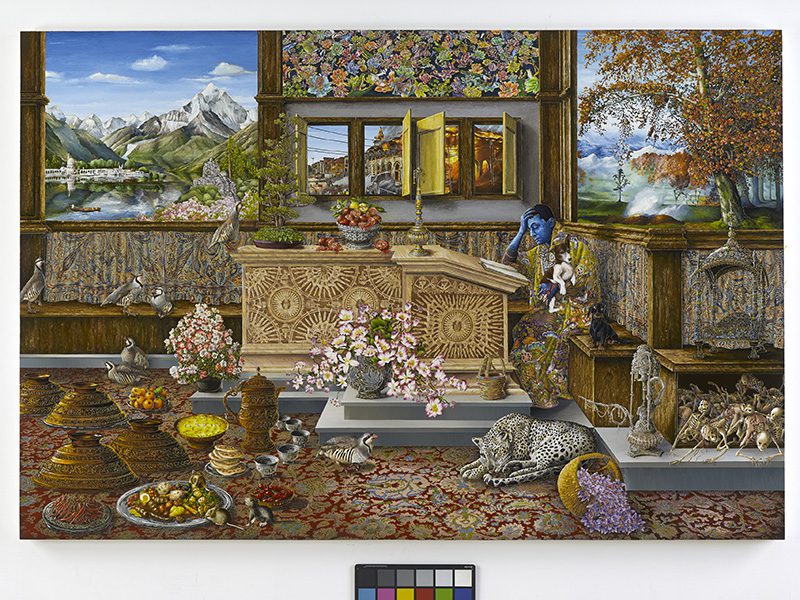 Raqib Shaw is known for his opulent and intricately detailed paintings of phantasmagorical dreamscapes made with surfaces inlaid with vibrantly colored jewels and enamel. His works reveal an eclectic combination of Western and Eastern influences, from Persian carpets and Northern Renaissance painting to industrial materials and Japanese lacquer.
Raqib Shaw is known for his opulent and intricately detailed paintings of phantasmagorical dreamscapes made with surfaces inlaid with vibrantly colored jewels and enamel. His works reveal an eclectic combination of Western and Eastern influences, from Persian carpets and Northern Renaissance painting to industrial materials and Japanese lacquer.
By Efi Michalarou
Photo: White Cube Gallery Archive
Raqib Shaw in his new solo exhibition “Self Portraits” at the White Cube Gallery in London, presents new paintings and three new bronze sculptures. Born in Calcutta, Shaw was raised in Kashmir but came to London in 1998, Raqib Shaw is known for his opulent and intricately detailed paintings of imagined paradises, inlaid with vibrantly coloured jewels and enamel. His paintings and sculptures evoke the work of Old Masters from the collections of the National Gallery, London, and Prado Museum, Madrid, whilst drawing on multifarious sources, from mythology and religion to poetry, literature, art history, textiles and decorative arts from both Eastern and Western traditions, all infused with the artist’s imagination. In the new series of paintings, the most autobiographical to date, Shaw borrows compositions from 15th, 16th and 17th Century Old Master paintings. Rendering their classical architecture with exacting detail, Shaw transforms the religious scenes of the originals by bringing in elements of his studio, the landscape of his home in Kashmir, Hindu iconography and Japanese architecture. He also interlinks the series by including miniature versions of other works in the exhibition, depicted ‘in progress’. Shaw himself appears throughout these works in different guises, as the joker, a mime artist, and even a ghoul lying in his own coffin. In “Self-portrait in the Sculpture Studio at Peckham (After Mocetto)” (2015−16), Shaw peers around a column to the right of the composition, at the centre of his own universe. Behind him, two wall panels show colourful underwater scenes, appropriated from one of his earlier series of paintings titled “The Garden of Earthly Delights” (2003/2004). In the distance, glimpsed through the architecture, is a gently receding landscape of waterfalls, rocks, irises and majestic pine trees, as if it had been collaged directly from a Japanese landscape painting. Shaw’s new bronze sculptures are based on Mannerist sculpture, which itself used iconography from Classical Antiquity, respond to the freedom, movement and exuberance of these forms and the conflation of internal and external modes of being. Shaw’s sculptures are made using the lost wax casting technique, and use a patina which is exactly the same as that used by Renaissance sculptors. Small-scale and exhibited on plinths, they depict hybrids such as centaurs, in stylised, compositions, where figures are often erotically intertwined.
Info: White Cube Bermondsey, 144-152 Bermondsey Street, London, duration 13/7-11/9/16, Days & Hours: Tue-Sat 10:00-18:00, sun 12:00-18:00, http://whitecube.com
